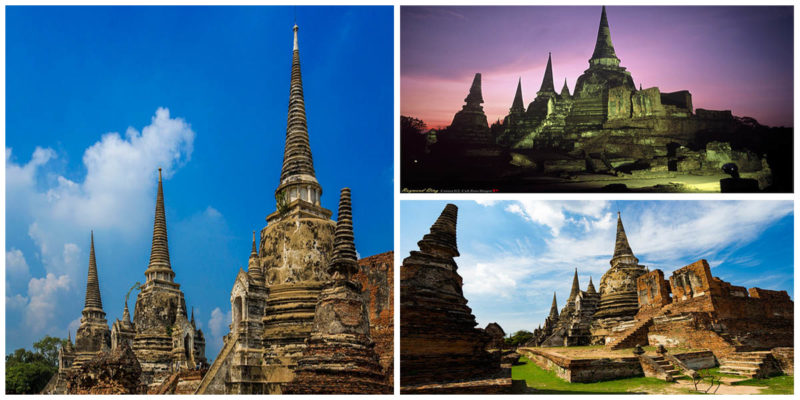It is 1350, and the Crown Prince U-Thong of the Siamese kingdom of Ayutthaya (now part of Thailand) made a request. His wish was for a Royal Palace to be built upon the grounds of a piece of earth known as Nong Sano.
Once built, the palace enclosed three structures made from wood. These buildings were once known as “Phaichayon Maha Prasat,” “Aisawan Maha Prasat,” and “Phaithun Maha Prasat.”
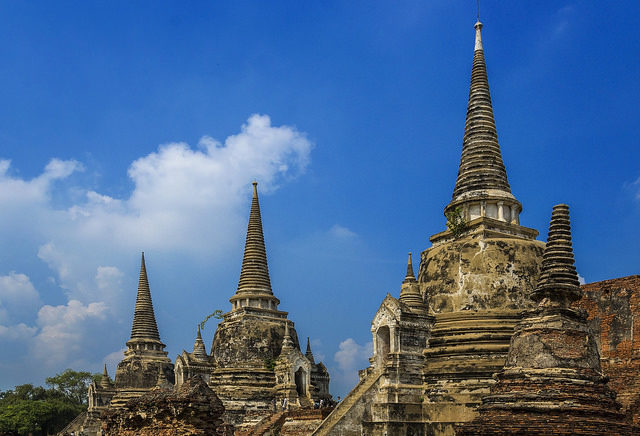
As expected this palace with all its imposing enchantment became the place that the Prince U-Thong so proudly called home. U-Thong ascended to the throne in 1350 to rule for 19 years as King Ramathibodi I.
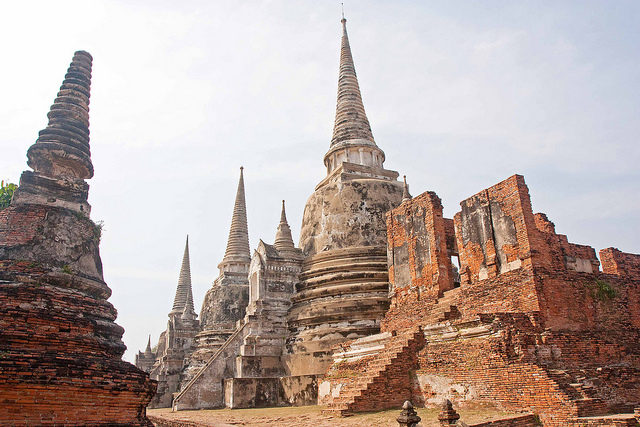
Hundreds of years later, King Borom Trailokanat came to the throne. A long time had passed since the old palace was built and so the king gave an order for a new palace to be built northward from the old. But the king held the place that his forebears once so proudly called home in high regard, so he made different plans for this place.
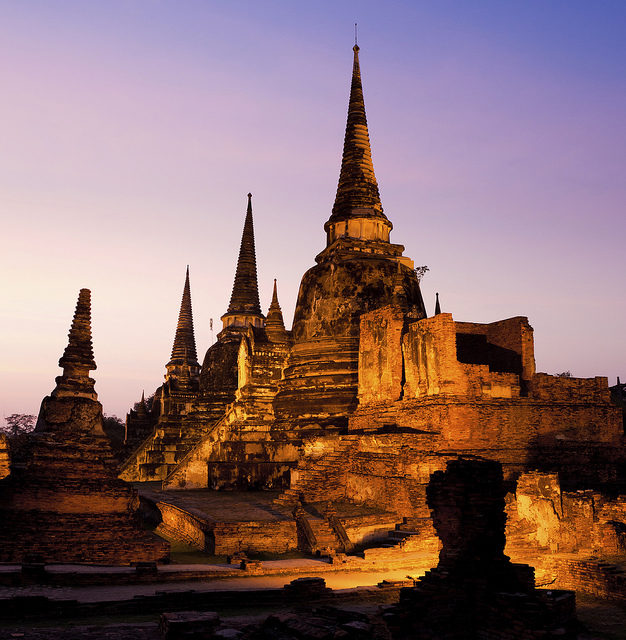
His plan for this place of old was to be converted into a holy area. A quote from The Royal Chronicles of Ayutthaya, a book written by Richard D Cushman, gives a more coherent explanation about the king’s vision.
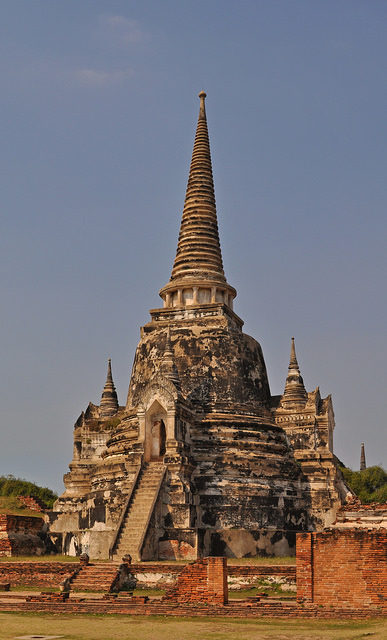
“The King gave over the palace to be converted into the Phra Si Sanphet Monastery, came to live on the banks of the river, and then had the Bencarat Palace and the Sanphet Palace built.”
And this is how the monastery of Phra Si Sanphet came to be. When the son of King Borom Trailokanat, King Ramathibodi II, came to the throne in 1491, he ordered two new chedis (stupas) to be built at this now holy place.
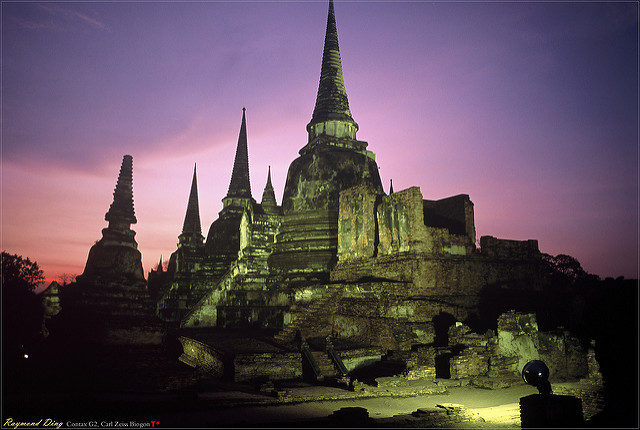
Into these chedis were placed the ashes of his father and brother. The chedi that stood to the east of the monastery kept the remains of King Borom Trailokanat, and the one placed on the west side housed the ashes of his brother Borommaracha.
Then in 1499, King Ramathibodi II requested a Royal Chapel to be built know as “Wihan Luang.” But it appears that the king had, even more, plans for this monastery, since he had yet another wish. He wanted for a colossal statue to be built inside Wat Phra Sri Sanphet. And so his loyal followers got to work, and three years later the statue was done.
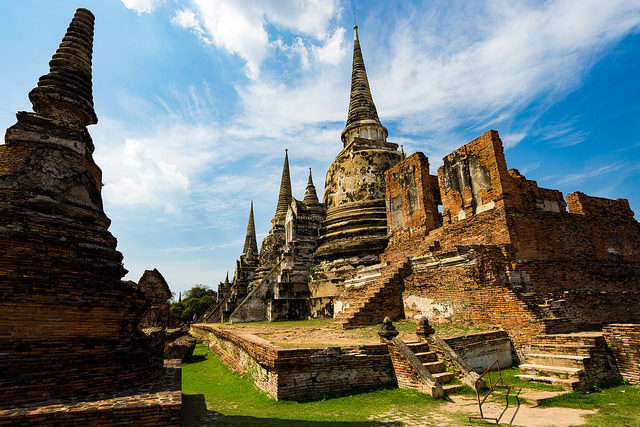
It represented the Buddha standing proudly more than 50 feet from the ground on top of a platform 25 feet wide. The statue itself was cast from 60 tons of bronze gilded with and 750 lbs of gold.
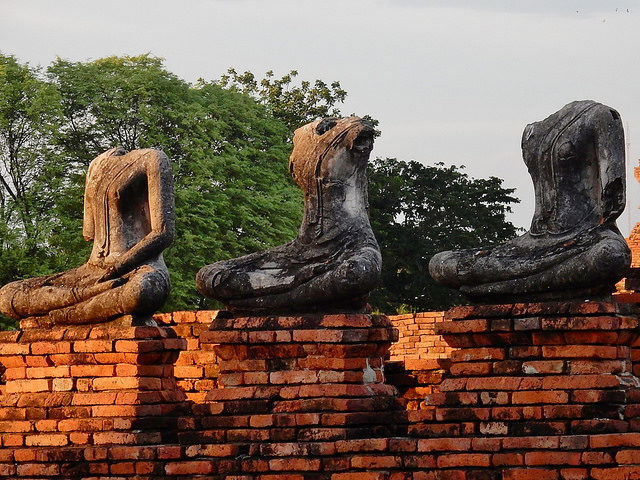
According to the researchers, this statue was the most beautiful and by far the most impressive of its kind.
With time a third chedi was built, only this time it was King Ramathibodi II that was to be placed inside. After him, numerous kings came and went, and almost all of them left their mark upon this monastery.
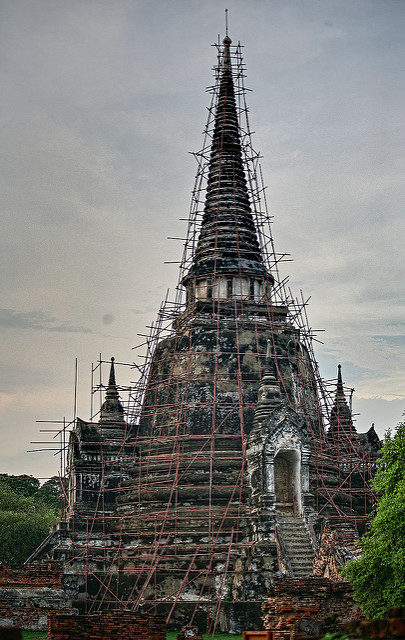
But nothing hurt the monastery like the Burmese invasion. It was April 1767. On this day, this impressive place was burned and dreadfully damaged. The standing Buddha suffered the worst. It was completely stripped of its gold, leaving a roughly damaged bronze shell.
What it remains today is what was saved through restorations, countless written testimonies and one’s wish to research even deeper into the riches of old.
